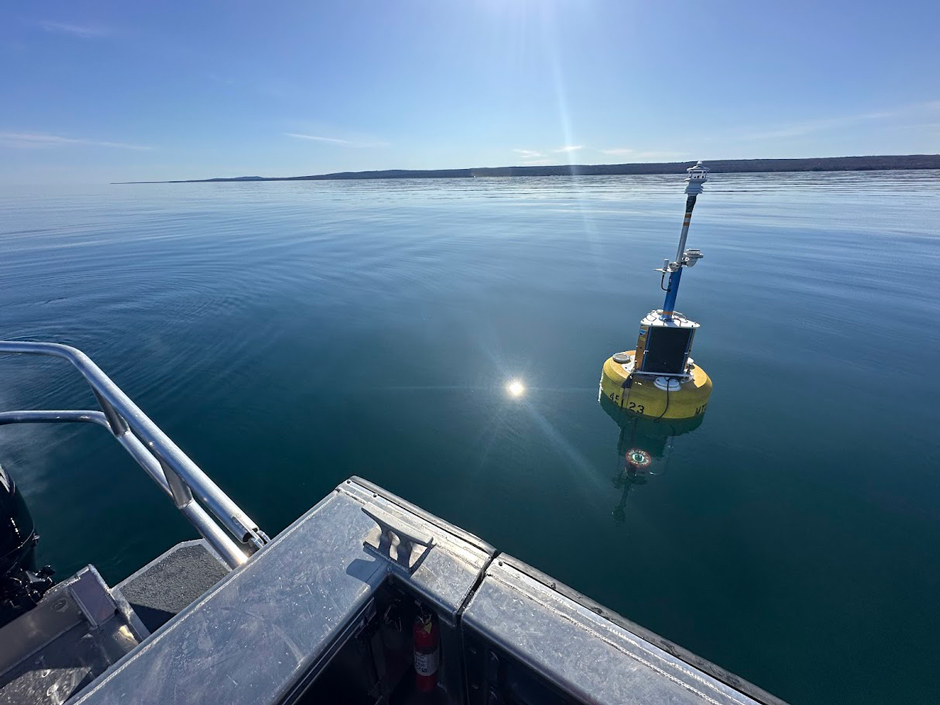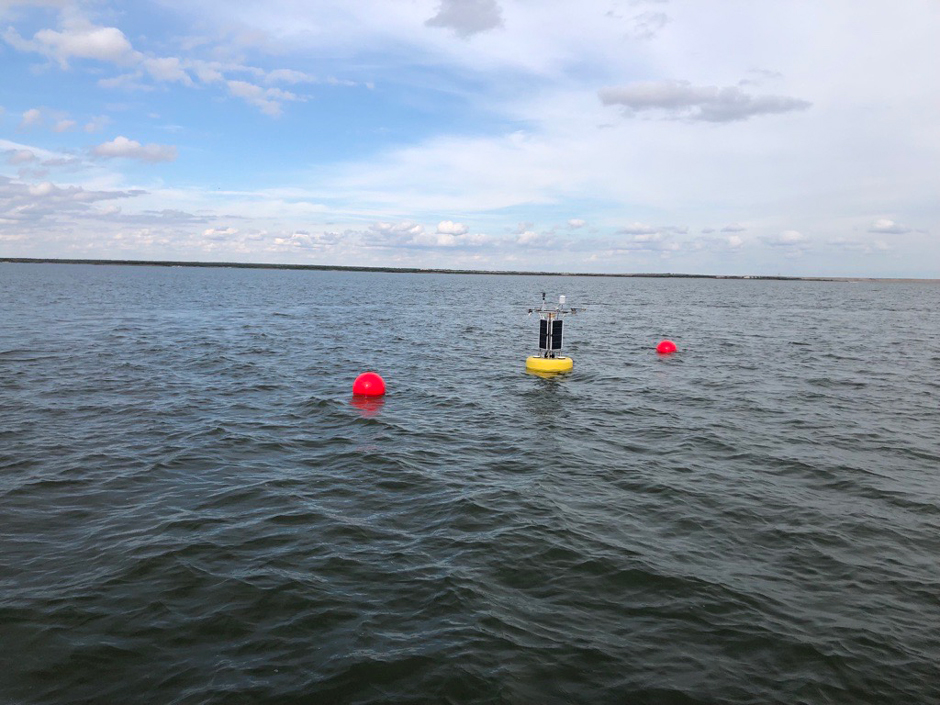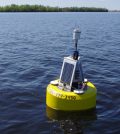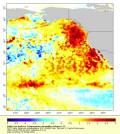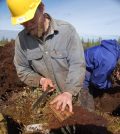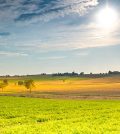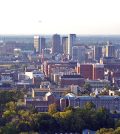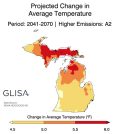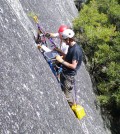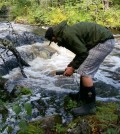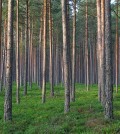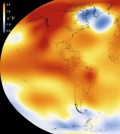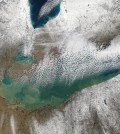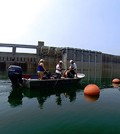Posts for tag "temperature"
Great Lakes Research Center: Designing Targeted Monitoring Solutions
According to the National Oceanic and Atmospheric Administration (NOAA), the Great Lakes have more miles of coastline than the contiguous Atlantic and Pacific coasts combined and contain 20 percent of the world’s freshwater, making it a critical...
- Posted March 17, 2025
From Pans to Buoys: Advancing Reservoir Evaporation Rate Monitoring in Texas
In warmer climates like Texas, high reservoir evaporation rates can lead to declines in water level and water availability during droughts, making monitoring essential in order to ensure water security during times of scarcity. According to the...
- Posted February 19, 2025
Warming Linked To Lake Tanganyika Fish Declines
U. of Arizona investigators lead an effort using sediment cores and dissolved oxygen records to link Lake Tanganyika fish declines and global warming.
- Posted August 11, 2016
Lake Nipissing Algae Blooms: Mixing May Have Role
Data buoys and temperature strings help U. Saskatchewan and Nipissing University scientists study mixing’s role in Lake Nipissing algae blooms.
- Posted July 26, 2016
OpenCTD: Open-Source Sensor Ready For Seas
OpenCTD, the first open-source sensor developed by Oceanography for Everyone, is ready for marine and citizen scientists alike.
- Posted July 21, 2016
‘The Blob’ And El Niño Harmed Pacific Ocean Productivity
The 2015-2016 El Niño and the Blob came together to harm productivity in the Pacific Ocean, say scientists at University of California, Santa Cruz.
- Posted July 20, 2016
Dry, Wet Thawing Permafrost Soils Affect Greenhouse Gas Ratios
Numerous studies into thawing permafrost soils reveal insights into carbon dioxide and methane ratios impacting the permafrost carbon feedback loop.
- Posted June 29, 2016
May 2016 Global Temperatures Hottest Ever Recorded
A super El Niño event in 2016 combined with anthropogenic greenhouse gas emissions has so far created the hottest year in over 136 years, NASA scientists believe. Researchers are troubled by the trend, as 2014 and 2015...
- Posted June 28, 2016
Daytime Temperature Data Less Variable For Tracking Climate Change
While researchers have typically incorporated both daytime and nighttime temperatures into their estimates of surface temperature data, University of Alabama at Huntsville (UAH) scientists have found that nighttime temperatures can fluctuate so much that leaving them out...
- Posted May 23, 2016
Climate Report Looks At Michigan Public Health Impacts
A new report released by researchers at Michigan State University and the University of Michigan describes changing climate conditions as threats to public health in the state, according to a release. Those conditions include things like warmer...
- Posted May 19, 2016
At Sippo Lake, Sediment Questions And Place-Based Learning Push
Stark County Park District managers study how Sippo Lake affects water quality after sediment load reduction efforts and push place-based learning tools.
- Posted May 2, 2016
Yosemite Rock Falls Impacted By Temperature
U.S. Geological Survey and park scientists complete a three-and-a-half year study finding temperature’s role in rock falls in Yosemite National Park.
- Posted April 1, 2016
Penobscot Indian Nation Safeguards Tribal Waterways
Resource managers with Penobscot Indian Nation keep a careful eye on their waterways with help from a Thermo Orion Star portable pH meter and other gear.
- Posted March 24, 2016
Tree Respiration Rates May Easily Adapt To Temperature Rises
In a predicted future of warmer global temperatures, researchers at the University of Minnesota had guessed that the respiration rates of trees, including some output of carbon dioxide, would increase by broad margins. But in putting the...
- Posted March 24, 2016
Warming May Spell Disaster For Woodrats Eating Toxic Plants
Woodrats find it harder to process creosote plants at higher temperatures. A tipping point seems to exist above which they will find it tough to thrive.
- Posted February 9, 2016
European Summers Warmest Since Roman Times
Summers in Europe are pretty warm these days. According to a new study, recent decades of the season are more than 1 degree Celsius warmer than they were 2,000 years ago. Since 1986, average summer temperatures on...
- Posted February 5, 2016
NASA: 2015 Warmest Year On Record
Global warming continues, bringing with it higher average temperatures all over the Earth. Of recorded temperatures since 1880, when records began, the highest 15 out of 16 have occurred since 2001. In a release from NASA, researchers...
- Posted February 1, 2016
Impacts Of Global Temperature Rise Vary By Location
Although a 2-degree Celsius rise in global average temperatures may not sound like a lot, regional variations in the rise may mean significant changes, as much as 6 degrees Celsius higher in some areas inland, according to...
- Posted January 29, 2016
Lake Erie Temperatures Comparable To Last Ice-Free Season
In Buffalo, New York, like in much of the U.S. Midwest, air temperatures are warmer than they usually are this time of year, thanks partly to a strong El Niño. Another result of the weather phenomenon’s influence...
- Posted January 7, 2016
Temperature Sensing Advances Thanks To Fiber Optics
This magazine has reported on the innovative research of Scott Tyler before. Tyler, a professor of hydrology at the University of Nevada – Reno, was using fiber optics at the time (December 2014) to more accurately and...
- Posted December 29, 2015


